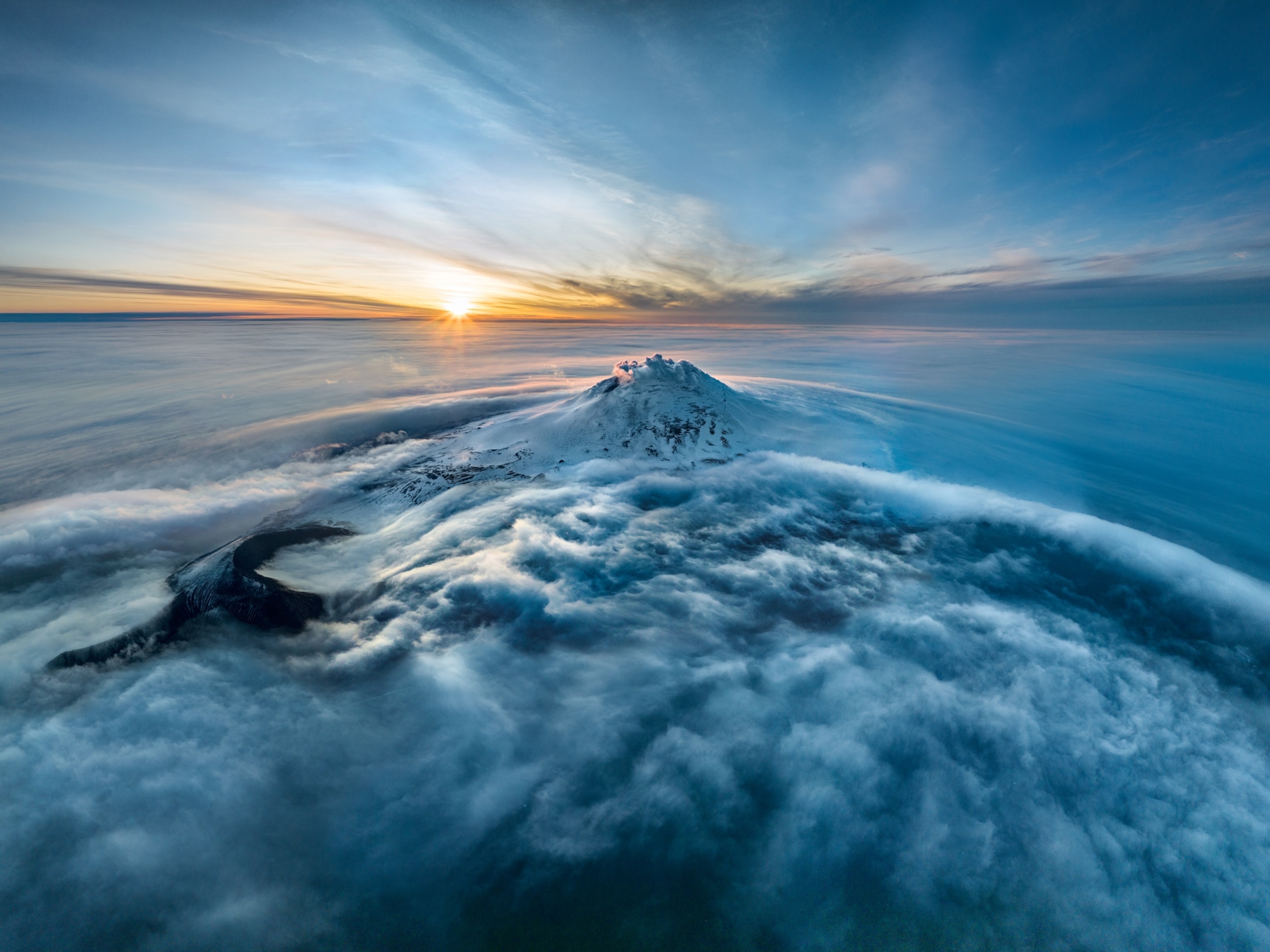
Colossal crabs may hold clue to Amelia Earhart fate
Does the secret of the famed aviator’s disappearance lie in the underground haunts of the world’s largest land invertebrate?
Nikumaroro Island, Kiribati — The coconut crabs on the island of Nikumaroro are longer than a reporter’s notebook, wider than an archaeologist’s trowel, and roughly the same size as an explorer’s hiking boot. As the largest land invertebrate on the planet, coconut crabs can measure up to three feet across and clock in at over nine pounds. In short, they are too big.
Members of the National Geographic-sponsored expedition that last searched the island for traces of Amelia Earhart knew to keep a wary eye out for the enormous crustaceans—their claws exert more force than most animals' bite.

During the day, when the scientists do most of their work on the Pacific atoll, the crabs are easily avoided. Those that emerge from their burrows into the intense tropical heat spend their time in the shade of the coconut palms, say, or among the branches of the ren trees. (Yes, the crabs can climb.)
But at night? “The crabs close in on you,” says John Clauss, a member of the International Group for Historic Aircraft Recovery (TIGHAR) and a veteran of more than ten of the organization’s expeditions to the island. “If you shine a flashlight, outside the shadow ring there are a thousand crabs.” Or so it can seem. Clauss has learned not to sleep on the ground.

Coconut crabs play a key role in TIGHAR’s hypothesis about what happened to Amelia Earhart after she and navigator Fred Noonan disappeared on July 2, 1937, on the third-to-last leg of their world flight. The group posits that when Earhart and Noonan couldn’t find Howland, the Pacific island they were aiming for, the aviators landed instead on Nikumaroro. That island, then called Gardner, is surrounded by a reef that could serve as a rough runway. Eventually, the theory goes, Noonan died, the plane floated off the reef, and Earhart was left alone on the island.
Except for the crabs.
By 1940, the British had established a colony on the island. That year, Gerald Gallagher, the island’s colonial administrator, sent a telegram telling his superiors that a partial human skeleton had been found “which is just possibly that of Amelia Earhardt [sic].” The bones—13 in total—were sent to Fiji to be examined, and subsequently lost.
There are 206 bones in an adult human skeleton—what happened to the 193 that weren’t found? Evidence points to the coconut crabs, who have earned their nickname “robber crabs.” When Gallagher described the site of the discovery he said that “coconut crabs had scattered many bones.” The omnivorous crabs will eat coconuts (of course), fallen fruit, birds, rodents, other crabs—and carrion.
TIGHAR has performed several experiments to see if the crabs would drag bones back to their burrows. In one, they brought a pig carcass to the island and filmed what happened to it. Crabs—coconut crabs plus the smaller, more numerous strawberry hermit crabs—swarmed the body, removing most of the flesh within two weeks.
“This tells us crabs drag bones,” says Tom King, the group’s former chief archaeologist, “but it doesn’t tell us how far.” A year after the experiment they discovered some bones had been dragged 60 feet from the body, but they couldn’t account for all of the remains.
King thinks it’s likely that Earhart perished on the island as a castaway. After she died, the crabs consumed her body and dragged her bones into their burrows—except of course for the thirteen that Gallagher discovered.

On this most recent expedition, King and his crew excavated around the base of a ren tree on the southwest portion of the Nikumaroro, where forensic dogs signaled two years ago that someone had died. They didn’t find bones then, but this time brought dogs with them from the Canine Forensics Foundation to sniff on other locations near the site—a hole where they think the skull was found, a site where opened clamshells were located, and a site near where the plane may have landed. Once again no remains were discovered, but the team continues to be hopeful that they’ll discover the source of the scent that first alerted the dogs—perhaps a long-gone crab’s burrow where Earhart’s remains came to rest.
Related Topics
You May Also Like
Go Further
Animals
- This ‘saber-toothed’ salmon wasn’t quite what we thoughtThis ‘saber-toothed’ salmon wasn’t quite what we thought
- Why this rhino-zebra friendship makes perfect senseWhy this rhino-zebra friendship makes perfect sense
- When did bioluminescence evolve? It’s older than we thought.When did bioluminescence evolve? It’s older than we thought.
- Soy, skim … spider. Are any of these technically milk?Soy, skim … spider. Are any of these technically milk?
- This pristine piece of the Amazon shows nature’s resilienceThis pristine piece of the Amazon shows nature’s resilience
Environment
- This pristine piece of the Amazon shows nature’s resilienceThis pristine piece of the Amazon shows nature’s resilience
- Listen to 30 years of climate change transformed into haunting musicListen to 30 years of climate change transformed into haunting music
- This ancient society tried to stop El Niño—with child sacrificeThis ancient society tried to stop El Niño—with child sacrifice
- U.S. plans to clean its drinking water. What does that mean?U.S. plans to clean its drinking water. What does that mean?
History & Culture
- Meet the original members of the tortured poets departmentMeet the original members of the tortured poets department
- Séances at the White House? Why these first ladies turned to the occultSéances at the White House? Why these first ladies turned to the occult
- Gambling is everywhere now. When is that a problem?Gambling is everywhere now. When is that a problem?
- Beauty is pain—at least it was in 17th-century SpainBeauty is pain—at least it was in 17th-century Spain
- The real spies who inspired ‘The Ministry of Ungentlemanly Warfare’The real spies who inspired ‘The Ministry of Ungentlemanly Warfare’
Science
- Here's how astronomers found one of the rarest phenomenons in spaceHere's how astronomers found one of the rarest phenomenons in space
- Not an extrovert or introvert? There’s a word for that.Not an extrovert or introvert? There’s a word for that.
- NASA has a plan to clean up space junk—but is going green enough?NASA has a plan to clean up space junk—but is going green enough?
- Soy, skim … spider. Are any of these technically milk?Soy, skim … spider. Are any of these technically milk?
- Can aspirin help protect against colorectal cancers?Can aspirin help protect against colorectal cancers?
Travel
- What it's like to hike the Camino del Mayab in MexicoWhat it's like to hike the Camino del Mayab in Mexico
- Is this small English town Yorkshire's culinary capital?Is this small English town Yorkshire's culinary capital?
- This chef is taking Indian cuisine in a bold new directionThis chef is taking Indian cuisine in a bold new direction
- Follow in the footsteps of Robin Hood in Sherwood ForestFollow in the footsteps of Robin Hood in Sherwood Forest




